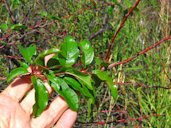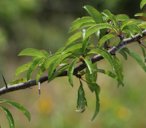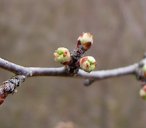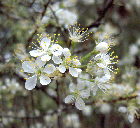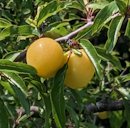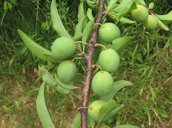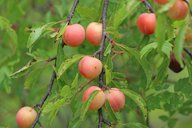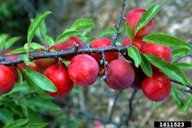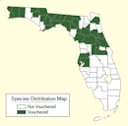| Chickasaw Plum - Prunus angustifolia | |||||||||||||||||||||||||||||||||||||||
|---|---|---|---|---|---|---|---|---|---|---|---|---|---|---|---|---|---|---|---|---|---|---|---|---|---|---|---|---|---|---|---|---|---|---|---|---|---|---|---|
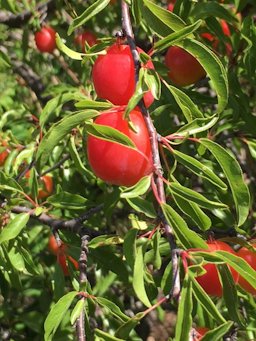 Fig. 1 Chickasaw plum (Prunus angustifolia) 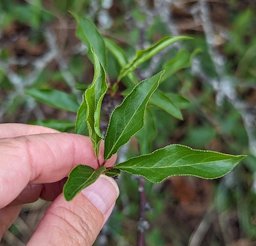 Fig. 2  Chickasaw Plum P. angustifolia, Athens, TX 75752, USA 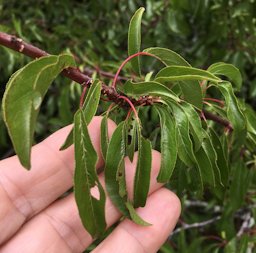 Fig. 3  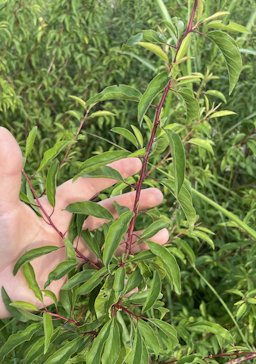 Fig. 4  Chickasaw Plum P. angustifolia, Mebane, NC, US 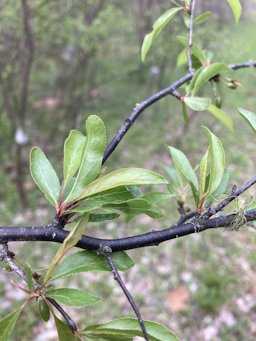 Fig. 5  Chickasaw Plum P. angustifolia, McCurtain County, OK, US 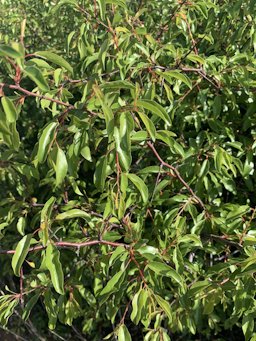 Fig. 6  Chickasaw Plum P. angustifolia, Paducah, TX, US 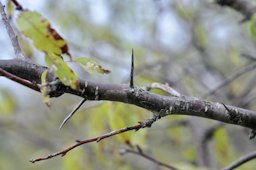 Fig. 13  P. angustifolius, Chickasaw plum, Purtis Creek State Park, Eustace, Van Zandt County 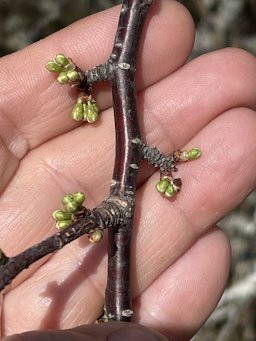 Fig. 14 Chickasaw Plum P. angustifolia, Wadesboro, NC, US 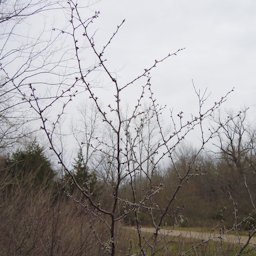 Fig. 15  Chickasaw Plum P. angustifolia, Ray Roberts Lake State Park, Denton, TX, US  Fig. 16  Chickasaw Plum P. angustifolia, Wadesboro, NC, US  Fig. 17  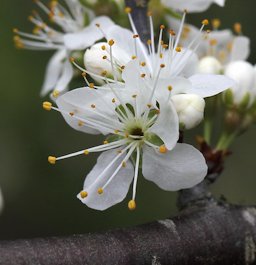 Fig. 18  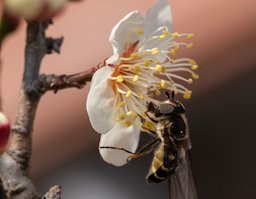 Fig. 19  Apis sp. on P. angustifolia, Chickasaw Plum 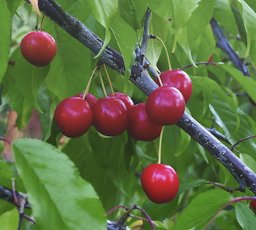 Fig. 26  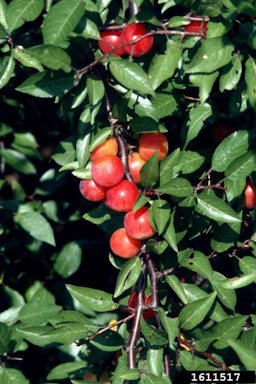 Fig. 27  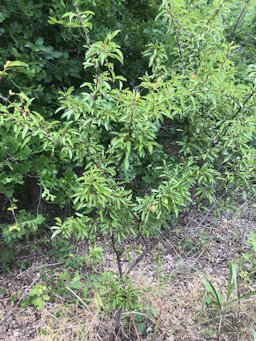 Fig. 33  Chickasaw Plum P. angustifolia, Lewisville, TX, US 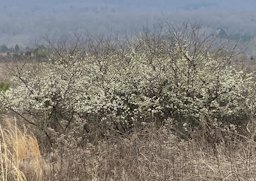 Fig. 34  Chickasaw plum (P. angustifolia), Denton, NC, US (thicket) 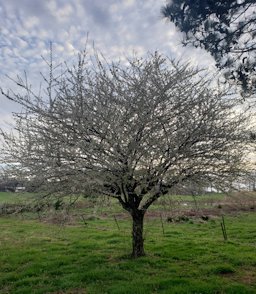 Fig. 35  Chickasaw Plum P. angustifolia, Jackson County, AL, US 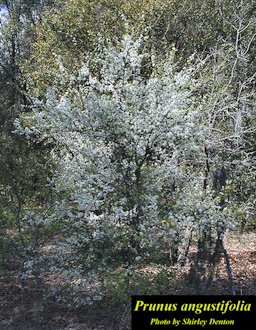 Fig. 36  Chickasaw plum (April)  Fig. 37  Chickasaw Plum P. angustifolia, Wise County, TX, US (June) 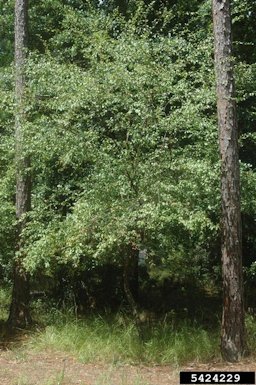 Fig. 38  Chickasaw plum (July) 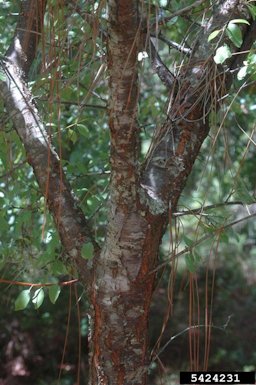 Fig. 39  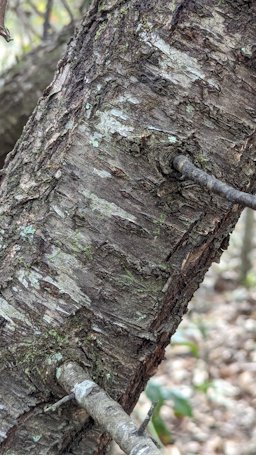 Fig. 40 Chickasaw Plum P. angustifolia, Tallahassee, FL, US 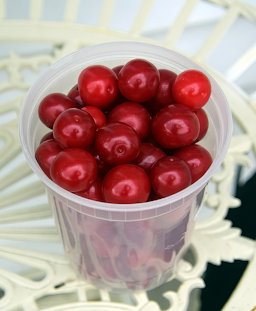 Fig. 41  Today, I was able to go out to out little orchard in the front yard & pick our plums. Most people grow conventional plums but we chose to grow native plums. These Chickasaw Plums look more like Cherries when they are growing on the tree. They are smaller than regular plums and a beautiful deep red colour. They taste like plums but their skins are a bit thicker than regular plums.  Fig. 42  Robin (Turdus migratorius) on chickasaw plum |
Scientific
name Prunus angustifolia Marshall Pronunciation PROO-nus an-gus-tih-FOLE-ee-uh 1 Common names English: Cherokee plum, Chickasaw plum, Florida sand plum, mountain cherry, sandhill plum; German: Chicasapflaume; Portuguese: Pessego-amarelo; Swedish: chickasawplommon 2,3 Synonyms Cerasus chicasa (Michx.) Ser., P. angustifolia subsp. varians W.Wight & Hedrick, P. angustifolia var. angustifolia, P. angustifolia var. varians (W.Wight & Hedrick) C.K.Schneid., P. angustifolia var. watsonii (Sarg.) L.H.Bailey, P. angustifolia var. watsonii (Sarg.) Waugh, P. chicasa Michx., P. chicasa var. normalis Torr. & A.Gray , P. rugosa Rydb., P. stenophyllus Raf., P. watsonii Sarg. 3 Relatives Apple (Malus domestica), blackberry (Rubus spp.), capulin (Prunus salicifolia), loquat (Eriobotrya japonica), mayhaw (Crataegus spp.), peach (Prunus persica), pear (Pyrus spp.), strawberry (Fragaria ananassa) 4 Family Rosaceae (rose family) 1 Origin Native to the southern United States 1 USDA hardiness zones 6a through 9b 1 Uses Food; screen; specimen; street without sidewalk; highway median; bonsai 1 Height 12-20 ft 1 Spread 15-20 ft 1 Crown Rounded; irregular; fine textured; often leans to one side or the other 1 Plant habit Short (sometimes multi-stemmed) trunk; sprouts from the base; forming thickets; thorns 1,3 Growth rate Moderate 1 Longevity Short lived 1 Trunk/bark/branches Shiny, reddish zigzagging twigs with stout thorns; bark reddish brown and smooth, becoming scaly and shallowly furrowed with age; elongated horizontal lenticels 1,9 Pruning requirement Occasional pruning can significantly improve the form of the crown 1 Leaves Deciduous; simple; alternate; elliptic/ovate; dark green and shiny on top, dull green underneath; 1 1/2-3 in. (4-7.5 cm) 1 Flowers White; showy; fragrant; emerges singularly or in dense clusters; late winter, early spring 1 Fruit Fleshy drupe; yellow to red; oval; 1/2 -1 in. (1.25-2.5 cm); one stone 1,4 Season May-June 4 Light requirement Full sun to partial shade 1 Soil tolerances Clay; sand; loam; acidic; well-drained 1 pH preference Does poorly in alkaline pH 1 Drought tolerance Established Chickasaw plums are drought tolerant 8 Wind tolerance Tolerates strong winds 12 Aerosol salt tolerance Low/no tolerance of salty wind or direct salt spray 10 Soil salt tolerance Not salt tolerant of inundation by salty or brackish water 10 Roots Extensive root system and often forms thickets, which make it useful for erosion control Pest/disease resistance Resistant to pests and diseases Invasive potential * Native Known hazard Interior of the pit is toxic; spines on terminal branches may cause injuries 4 Reading Material Prunus angustifolia: Chickasaw Plum, University of Florida pdf Prunus angustifolia, Floridata Sand Plums for Home and Commercial Production, Oklahoma State University pdf Chickasaw plum, Prunus angustifolia, Plant Fact Sheet USDA, NRCS pdf Origin Chickasaw plum (Prunus angustifolia), also called sand plum, occurs in at least 27 states, ranging from Nebraska to New Jersey on the north and from New Mexico to Florida on the south. California also has sand plum, though it distribution is broken by Arizona and Nevada. 14 In the 1800’s there was great interest in making cultivars out of native plums and by 1901 there were over 300 of them. But mechanization of fruit production in the early 1900’s led growers away from the native varieties though there has been some interest of late to use the native plums again as a high-value specialty crop. 11 Native Habitats Woodland edges, fencerows, open woods. Also cultivated. 10 Description The Chickasaw plum is a native fruit that was enjoyed by indigenous populations prior to the arrival of the Spaniards. 4 Growing 20 feet tall and wide, Chickasaw plum forms a rounded mass of slender, thorny branches sprouting from a short trunk. In spring, before the one and a half to three-inch-long leaves appear, Chickasaw plum is festooned with small, white, fragrant flowers which make the trees quite decorative. 1 It requires some chilling so won’t grow in South Florida and similar climates. 11 Leaves/stems The leaves of Chickasaw plum have teeth that are tipped with little red or yellow glands. (You need a hand lens to see these.) Leaves of flatwoods plum and American plum lack the glands. 8 The skinny leave has a trough down the middle. 11 Twigs are slender, zig-zag in appearance, and reddish brown with raised leaf scars, thorny branches, and small red buds. 13 Individual stems are called ramets and the collection of genetically similar individual stems (clones) that form a thicket is called a genet. 13
Fig. 7,8. P. angustifolia, Alabama, US Fig. 9,11. P. angustifolia, Fort Richardson State Park, Jacksboro, TX, USA Fig. 10. P. angustifolia, Bastrop, Texas, US Fig. 12. P. angustifolia, Ray Roberts Lake State Park, Denton, TX, US (lenticels) Flowers Each spring, from February to April, Chickasaw plum trees are covered with clusters of tiny, fragrant, white flowers. The flowers bloom on the previous year’s wood and are especially dramatic since they appear before the trees puts out new leaves. 7 Chickasaw plums produce abundant, flowers. The small, white, 5-petaled flowers are a 1/3 in (0.8 cm) across and have orange anthers. They occur in clusters on side twigs and tips of branches. 13
Fig. 20. P. angustifolia, Ray Roberts Lake State Park, Denton, TX, US Fig. 21. Chickasaw Plum, Tyler, TX, US Fig. 23. Chickasaw Plum, Heritage Park, Thompson's Station, TN, US Fig. 24. Chickasaw Plum flowers Silver River State Park, Florida Fig. 25. Chickasaw Plum P. angustifolia, Tallahassee, FL, US Pollination The species is hermaphrodite (has both male and female organs) and is pollinated by insects. 12 Fruit The fruit is a round, 1/3 – 1/2 in (0.83 - 1.3 cm) yellow to red fleshy plum, ripening from June to August and containing one pit. Ripe plums have a whitish appearance (bloom) on the skin. 13
Fig. 28. Chickasaw Plum, Cameron, TX, US Fig. 29. Chickasaw Plum, North Little Rock, AR, US Fig. 30. P. angustifolia, Lewisville, TX, US Fig. 31. P. angustifolia, Dublin, TX, US Fig. 32. P. angustifolia seeds Varieties The cultivar 'Guthrie' produces a large, yellow -skinned plum of good quality. 'Bruce is a hybrid between the Chickasaw plum and the Japanese plum. 4 Propagation Fresh seeds should be kept warm for a couple months, then chilled for 2-4 months before planting. They may take two years to germinate. Cuttings are difficult to root. Use young, fast growing, soft wooded tips under mist with bottom heat. 8 Wild plums spread through root suckers, making vegetative propagation possible. Select young suckers that have developed some roots of their own. Loosen the soil around the sucker to find the originating root from the parent plant. Cut this root close to the sucker. Gently remove the sucker and rebury the root of the parent plant. 13 Pruning Chickasaw plum usually produces suckers around the base of the trunk. If you prefer a groomed appearance, you can prune these back to keep the tree in its best form. Another option is to allow the suckers to grow into a thicket around the plant that can serve as a home for birds, butterflies, and other wildlife. 7 Pests/Diseases No significant pests or diseases affect the tree. It is susceptible to vercillium wilt when planted on land formerly used for vegetable gardening. Tent caterpillars sometimes damage the foliage. 4 Food Uses Wild plums have been utilized as food for centuries. Today, these species are eaten fresh or dried and are used in syrups, juice, jelly, jam, wine, fruit leather, meat recipes, and as part of various desserts. Substitute wild plums into a variety of recipes. 13 Wild plums can be stored through drying, freezing, fermenting, and canning. The flavor of wild plums ranges from sweet to sour, making jams and jellies one of the more popular preservation methods. 13 Other Uses This shrub is a host plant for the larvae of a number of butterflies including Coral hairstreak (Satyrium titus), Eastern tiger swallowtail (Papilio glaucus), Spring azure (Celastrina ladon), Viceroy (Limenitis archippus) and the Red-spotted purple (Limenitis arthemis astyanax). It also a host for the larvae of the Promethea silkmoth (Callosavia promethea), Imperial (Eaches imperialis), Polyphemus (Antheraea polyphemus) and the Cecropia (Hyalophora cecropia) moths. Plant as a screen where its suckers are welcome (woodland edges, casual but large garden settings). Spreads by underground stems forming clumps small thickets. Individual trees are fairly short-lived but the thicket is long-lived. When short-shoots die off, they can be thorny. 10 General Chickasaw plum, with its attractive bark, small leaves and slender branches, has been used for bonsai. 8 “Chickasaw” is Choctaw for “old” and “reside” or as we might say in English, “the old place.” 11
Fig. 43. Chickasaw plum Florida distribution map, wild population Fig. 44. US Natural distribution map for P. angustifolia (Chickasaw plum) Further Reading Chickasaw Plum: Yum, Eat the Weeds Chickasaw plum, Florida Wildflower Foundation pdf Wild Harvesting American Plum and Chickasaw Plum in Georgia, University of Georgia Warnell School of Forestry and Natural Resources pdf List of Growers and Vendors |
||||||||||||||||||||||||||||||||||||||
| Bibliography 1 Gilman, Edward F., et al."Prunus angustifolia: Chickasaw Plum." Environmental Horticulture Dept., UF/IFAS Extension, ST504, Original pub. date Nov. 1993, Revised Dec. 2018, AskIFAS, edis.ifas.ufl.edu/publication/ST504. Accessed 9 Nov. 2024. 2 "Prunus angustifolia Marshall." USDA, Agricultural Research Service, National Plant Germplasm System, Germplasm Resources Information Network (GRIN Taxonomy), National Germplasm Resources Laboratory, Beltsville, Maryland, npgsweb.ars-grin.gov/gringlobal/taxon/taxonomydetail?id=29836. Accessed 9 Nov. 2024. 3 "Prunus angustifolia Marshall." World Flora Online, www.worldfloraonline.org/taxon/wfo-0001013833. Accessed 9 Nov. 2024. 4 Boning, Charles R. Florida's Best Fruiting Plants- Native and Exotic Trees, Shrubs, and Vines. Sarasota, Pineapple Press, 2006. 5 Row, J. M., and W. A. Geyer. "Plant Fact Sheet for Chickasaw plum (Prunus angustifolia)." USDA-Natural Resources Conservation Service, Manhattan Plant Materials Center, Manhattan, KS 66502. 2010, USDA Plant Database, plants.usda.gov/DocumentLibrary/factsheet/pdf/fs_pran3.pdf. Accessed 9 Nov. 2024. 6 Stevenson, Carrie. "Chickasaw Plum." UF/IFAS Escambia County Extension, 7 Dec.2023, AskIFAS, nwdistrict.ifas.ufl.edu/hort/2023/12/07/chickasaw-plum-2/. Accessed 9 Nov. 2024. 7 "Chickasaw Plum." Gardening Solutions, UF/IFAS Extension, AskIFAS, gardeningsolutions.ifas.ufl.edu/plants/trees-and-shrubs/trees/chickasaw-plum/. Accessed 9 Nov. 2024. 8 Christman, Steve. "Prunus angustifolia." Floridata, no. 1084, Published 18 June 2008, floridata.com/plant/1084. Accessed 11 Nov. 2024. 9 "Prunus angustifolia." Plant Toolbox, NC State University, Extension Gardener, plants.ces.ncsu.edu/plants/prunus-angustifolia/. Accessed 11 Nov. 2024. 10 "Prunus angustifolia." Florida Native Plant Society, www.fnps.org/plant/prunus-angustifolia. Accessed 11 Nov. 2024. 11 Deane, Green. "Chickasaw Plum: Yum." Eat the Weeds and other things, too, www.eattheweeds.com/chickasaw-plum-yum/. Accessed 11 Nov. 2024. 12 Fern, Ken. "Prunus angustifolia Marshall." Plant For A Future, pfaf.org/user/Plant.aspx?LatinName=Prunus+angustifolia. Accessed 12 Nov. 2024. 13 Campbell, Holly J., and Heather N. Kolich. "Wild Harvesting American Plum and Chickasaw Plum in Georgia." University of Georgia Warnell School of Forestry and Natural Resources, WSFNR-21-81A, Dec. 2021, Bugwood.org, bugwoodcloud.org/resource/files/25248.pdf. Accessed 14 Nov. 2024. 14 Cooper, Brett S., et al. "Chickasaw Plum for Wildlife in Oklahoma." Dept. of Natural Resource Ecology and Management, Oklahoma State University, E-1026, May 2014, OSU, extension.okstate.edu/fact-sheets/print-publications/e/chickasaw-plum-for-wildlife-in-oklahoma-e-1026.pdf. Accessed 14 Nov. 2024. Photographs Fig. 1,37 Singleton, Pauline. "Chickasaw Plums, Prunus angustifolia, Wise County, TX, US." iNaturalist Research Grade, 31 May 2024, (CC BY 4.0), www.inaturalist.org/observations/219583083. Accessed 12 Nov. 2024. Fig. 2 Jean H. "Chickasaw Plum Prunus angustifolia, McCurtain County, OK, US." iNaturalist Research Grade, 8 Apr. 2022, (CC BY 4.0), www.inaturalist.org/observations/110752020. Accessed 12 Nov. 2024. Fig. 3,14,16 Dill, Becky. "Chickasaw Plum Prunus angustifolia, Paducah, TX, US." iNaturalist Research Grade, 9 July 2020, Public Domain, Image cropped, www.inaturalist.org/observations/52498698. Accessed 12 Nov. 2024. Fig. 4 Ballard, Alicia. "Chickasaw Plum Prunus angustifolia, Mebane, NC, US." iNaturalist Research Grade, 1 Sept. 2024, (CC BY 4.0), www.inaturalist.org/observations/239275107. Accessed 12 Nov. 2024. Fig. 5 birder53. "Chickasaw Plum Prunus angustifolia, Athens, TX 75752, USA." iNaturalist Research Grade, 21 Oct. 2023, (CC BY 4.0), www.inaturalist.org/observations/188461153. Accessed 12 Nov. 2024. Fig. 6 DeFonso, Eric. "Chickasaw Plum Prunus angustifolia, Paducah, TX, US." iNaturalist Research Grade, 21 Apr. 2024, (CC BY 4.0), www.inaturalist.org/observations/208590331. Accessed 12 Nov. 2024. Fig. 7,8 Southern Appalachia. "Chickasaw Plum Prunus angustifolia, Alabama, US." iNaturalist Research Grade, Mar. 2024, (CC BY 4.0), www.inaturalist.org/observations/202806363. Accessed 12 Nov. 2024. Fig. 10 Cowey, Nicholas. "Chickasaw Plum Prunus angustifolia, Bastrop, Texas, US." iNaturalist Research Grade, 8 June 2021, (CC BY 4.0), www.inaturalist.org/observations/82231130. Accessed 12 Nov. 2024. Fig. 9,11 Lindqvist, Annika. "Chickasaw Plum Prunus angustifolia, Fort Richardson State Park, Jacksboro, TX, US." iNaturalist Research Grade, 27 Oct. 2023, (CC BY 4.0), www.inaturalist.org/observations/189185066. Accessed 12 Nov. 2024. Fig. 12,15,20 julia_dilley. "Chickasaw Plum Prunus angustifolia, Ray Roberts Lake State Park, Denton, TX, US." iNaturalist Research Grade, 17 Feb. 2024, (CC BY 4.0), www.inaturalist.org/observations/199636535. Accessed 12 Nov. 2024. Fig. 13 Hill, Sonia. "Prunus angustifolius, Chickasaw plum, Purtis Creek State Park, Eustace, Van Zandt County." Flickr, 15 Oct. 2023 ,(CC BY 2.0), flickr.com/photos/carthamus/53261718655/. Accessed 9 Nov. 2024. Fig. 17 Zimny, Jo. "Chickasaw Plums Blossom." Flickr, 13 Apr. 2024, (CC BY-NC-ND 2.0),flickr.com/photos/joeyz51/53650372312/. Accessed 9 Nov. 2024. Fig. 18 Denton, Shirley. "Prunus angustifolia, Chickasaw Plum." Florida Native Plant Society, www.fnps.org/plant/prunus-angustifolia. Accessed 14 Nov. 2024. Fig. 19 HeungSoon. "Prunus angustifolia, Chickasaw Plum." Pixabay, 7 Mar. 2021, Public Domain, Image Cropped, pixabay.com/photos/bee-flower-plum-blossom-insect-6075541/. Accessed 14 Nov. 2024. Fig. 21 Bringhurst, Blake. "Chickasaw Plum Prunus angustifolia, Tyler, TX, US." iNaturalist Research Grade, 11 Feb. 2023, (CC BY 4.0), Image cropped, www.inaturalist.org/observations/148565502. Accessed 12 Nov. 2024. Fig. 22 Bradley, Keith. "Prunus angustifolia." Institute for Systematic Botany, University of South Florida, Tampa, S. M. Landry, and K. N. Campbell (application development), USF Water Institute, 2024, Atlas of Florida Plants, florida.plantatlas.usf.edu/photo.aspx?ID=1672. Accessed 11 Nov. 2024. Fig. 23 mabrybiggs. "Chickasaw Plum Prunus angustifolia, Heritage Park, Thompson's Station, TN, US." iNaturalist Research Grade, 4 Mar. 2024, (CC BY 4.0), www.inaturalist.org/observations/201306102. Accessed 12 Nov. 2024. Fig. 24 Price, Homer Edward. "Chickasaw Plum flowers Silver River State Park, Florida." Flickr, 21 Apr. 2011, (CC BY 2.0), flickr.com/photos/28340342@N08/5642073466. Accessed 9 Nov. 2024. Fig. 25,40 Skinner, Dave. "Chickasaw Plum Prunus angustifolia, Tallahassee, FL, US." iNaturalist Research Grade, 8 Mar. 2024, (CC BY 4.0), www.inaturalist.org/observations/201668472. Accessed 12 Nov. 2024. Fig. 26 Zimny, Jo. "Chickasaw Plums." Flickr, 10 Sept 2024, (CC BY-NC-ND 2.0), Image cropped, flickr.com/photos/joeyz51/52348218838/. Accessed 9 Nov. 2024. Fig. 27 Ruter, John. "Chickasaw plum (Prunus angustifolia Marsh.)" Forestry Images, No. 1611517, Uploaded 2 Apr. 2013, Updated 19 Mar. 2018, Bugwood.org, (CC BY-NC 3.0 US), www.forestryimages.org/browse/detail.cfm?imgnum=1611517. Accessed 11 Nov. 2024. Fig. 28 Walker III, Clint. "Chickasaw Plum Prunus angustifolia, Lewisville, TX, US." iNaturalist Research Grade, 21 May 2023, (CC BY 4.0), www.inaturalist.org/observations/162976746. Accessed 12 Nov. 2024. Fig. 29 jim_keesling. "Chickasaw Plums, Prunus angustifolia, North Little Rock, AR, US." iNaturalist Research Grade, 16 Dec. 2019, (CC BY 4.0), www.inaturalist.org/observations/36708788. Accessed 12 Nov. 2024. Fig. 30 Collins, Steve. "Chickasaw Plum Prunus angustifolia, Lewisville, TX, US." iNaturalist Research Grade, 14 June 2023, (CC BY 4.0), www.inaturalist.org/observations/201306102. Accessed 12 Nov. 2024. Fig. 31 Ruter, John. "Chickasaw plum (Prunus angustifolia Marsh.)" Forestry Images, No. 1611523, Uploaded 2 Apr. 2013, Updated 19 Mar. 2018, Bugwood.org, (CC BY-NC 3.0 US), www.forestryimages.org/browse/detail.cfm?imgnum=1611523. Accessed 11 Nov. 2024. Fig. 32 Hurst, Steve. "Prunus angustifolia seeds." USDA-NRCS PLANTS Database, National Plant Data Team, Greensboro, NC 27401-4901 USA, 28 Sept. 2024, npgsweb.ars-grin.gov/gringlobal/taxon/taxonomyimages?sid=29836. Accessed 13 Nov. 2024. Fig. 33 Taylor D. "Chickasaw Plum Prunus angustifolia, Cameron, TX, US." iNaturalist Research Grade, 8 May 2023, (CC BY 4.0), www.inaturalist.org/observations/160676734. Accessed 12 Nov. 2024. Fig. 34 ragbird. "Chickasaw Plum Prunus angustifolia, Denton, NC, US." iNaturalist Research Grade, 15 Mar. 2024, (CC BY 4.0), www.inaturalist.org/observations/202589361. Accessed 12 Nov. 2024. Fig. 35 hunterlowrey53. "Chickasaw Plum Prunus angustifolia, Jackson County, AL, USA." iNaturalist Research Grade, 25 Mar. 2021, (CC BY 4.0), Image cropped, www.inaturalist.org/observations/72041343. Accessed 13 Nov. 2024. Fig. 36 Danton, Shirley. "Prunus angustifolia." Atlas of Florida Plants, florida.plantatlas.usf.edu/photo.aspx?ID=1672. Accessed 11 Nov. 2024. Fig. 38 Rawlins, Karan A. "Chickasaw plum (Prunus angustifolia Marsh.)" Forestry Images, No. 5424229, Uploaded 20 July 2010, Bugwood.org, (CC BY-NC 3.0 US), www.forestryimages.org/browse/detail.cfm?imgnum=5424229. Accessed 11 Nov. 2024. Fig. 39 Rawlins, Karan A. "Chickasaw plum (Prunus angustifolia Marsh.)" Forestry Images, No. 5424231, Uploaded 20 July 2010, Bugwood.org, (CC BY-NC 3.0 US), www.forestryimages.org/browse/detail.cfm?imgnum=5424231. Accessed 11 Nov. 2024. Fig. 41 Zimny, Jo. "Chickasaw Plums." Flickr, 26 Sept. 2024, (CC BY-NC-ND 2.0), Image cropped, flickr.com/photos/joeyz51/53214595897/. Accessed 9 Nov. 2024. Fig. 42 Zimny, Jo. "Chickasaw Plums." Flickr, 21 Apr. 2023, (CC BY-NC-ND 2.0), flickr.com/photos/joeyz51/52835054097/. Accessed 9 Nov. 2024. Fig. 43 Wunderlin, R. P., et al. "Prunus angustifolia." Institute for Systematic Botany, University of South Florida, Tampa, S. M. Landry, and K. N. Campbell (application development), USF Water Institute, 2024, Atlas of Florida Plants, florida.plantatlas.usf.edu/Plant.aspx?id=3855. Accessed 11 Nov. 2024. Fig. 44 Little, Elbert L. "Natural distribution map for Prunus angustifolia (Chickasaw plum)." U.S. Department of Agriculture, Forest Service, 1 Dec. 2013, Wikimedia Commons, Public Domain, commons.wikimedia.org/wiki/File:Prunus_angustifolia_range_map_3.png. Accessed 13 Nov. 2024. * UF/IFAS Assessment of Non-native Plants in Florida's Natural Areas ** Information provided is not intended to be used as a guide for treatment of medical conditions. Published 19 Nov. 2024 LR. Last update 13 Mar. 2025 LR |
|||||||||||||||||||||||||||||||||||||||


